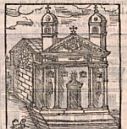0240 Il caso di Sant'Atanasio dei greci a Roma tra universalismo riformato e liturgia greca
Identifiers (Article)
Identifiers (Files)
Abstract
The essay traces the circumstances of the construction of S. Atanasio, the church of the Greeks in Rome, which was built at the behest of pope Gregory XIII Boncompagni by the architect Giacomo della Porta. Although founded with the intention of representing the universalist policies of Gregory XIII, S. Atanasio assumed its definitive identity often in contrast to the wishes of its cardinal protectors and of the pontiff himself. The singular architectural design and the interior decoration are reinterpreted here in light of new documents in which Greek-Byzantine liturgy and culture are essential reference points for the community that formed in the Greek college and for the solutions adopted in an attempt to reconcile the Greek and Latin rites.
Statistics


License

This work is licensed under a Creative Commons Attribution-NonCommercial-NoDerivatives 4.0 International License.



